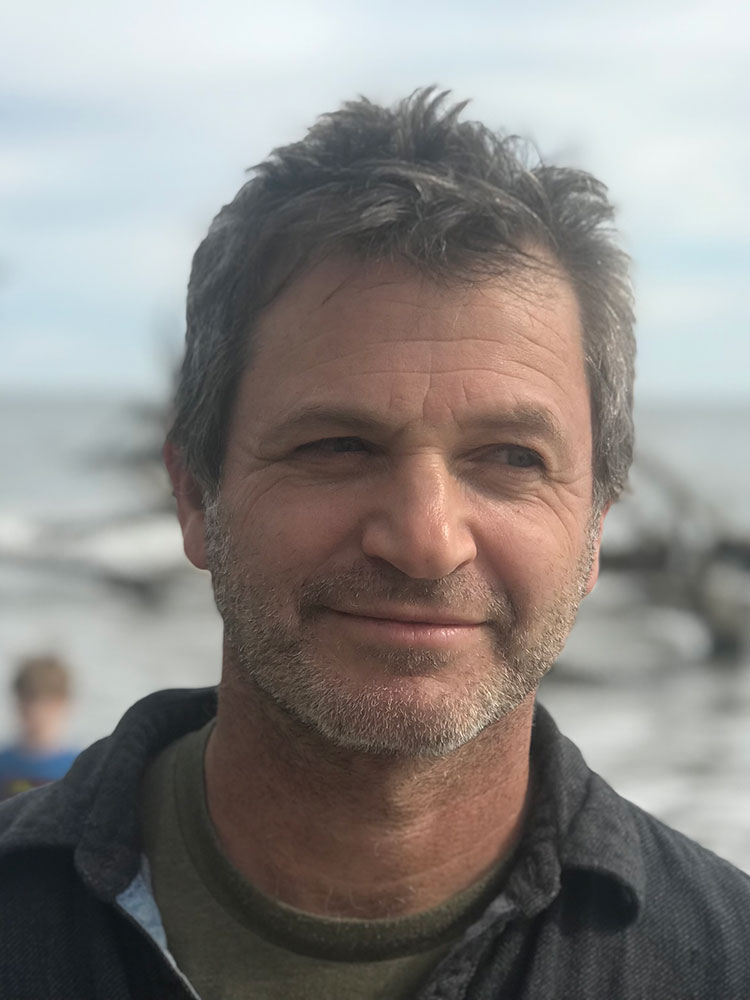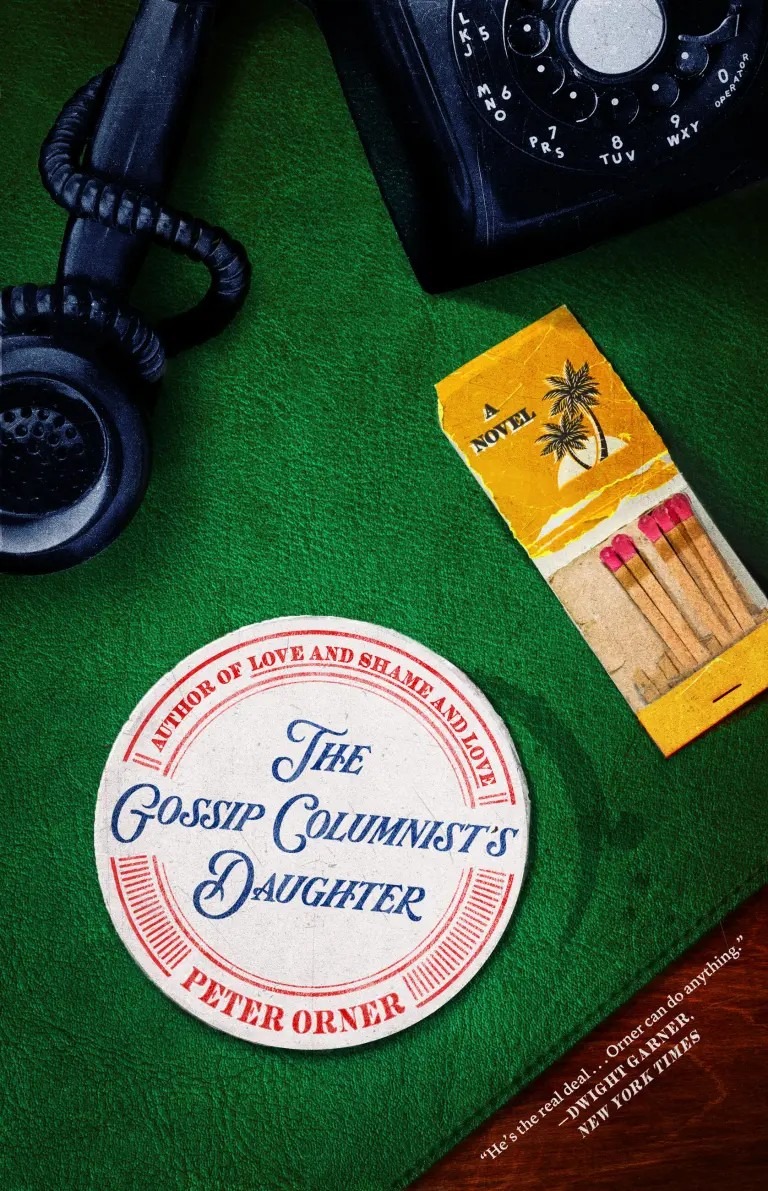
Peter Orner’s latest novel, The Gossip Columnist’s Daughter, is introspective, churning, and deeply personal, wrestling questions of family and broken relationships under the guise of a true crime murder-mystery. Through the fictional Jed Rosenthal, Orner reexamines the 1963 murder of Karyn “Cookie” Kupcinet, whose untimely death had an immediate impact on Chicago. Not only was Kupcinet tragically young (only 22), she was also the daughter of Irv Kupcinet, the famed Chicago columnist who had a 60-plus-year career of reporting on the city’s social scene alongside his equally well-known wife, Essee. The fact that she died days after the JFK assassination only made her death more sensational.
The Gossip Columnist’s Daughter is a dizzying but delightful journey between fact and fiction as Orner brings archival materials and photographs into Jed’s wrestling with the past, and the ways in which Cookie’s death still haunts his family. Orner even used Chicago magazine’s archive in his research, drawing on Carol Felsenthal’s spirited analysis of Irv after his death in 2007.
Originally from Highland Park, Orner’s new novel is also an incredibly satisfying tribute to his hometown; a “Real Chicago Book,” he tells me. Broad in theme, but fastidious in its specificity, Orner’s attention to detail elicits a strong sense of knowing (or more accurately, if you know, you know). The Gossip Columnist’s Daughter was released by Little, Brown on August 12. Orner will promote the book at the Printer’s Row Fest on Sunday, September 7, and through a talk at The Book Stall on September 9.
It’s clear from the first page that this is a book written by someone who knows Chicago well. This is one of my favorite passages, about halfway through the book:
“In Blue in Chicago, Bette Howland writes, ‘Chicago isn’t a city: just the raw materials for a city.’ That might describe any city, but this city is especially rich in raw materials.”
What made you decide to write a book like this now? You haven’t lived in Chicago for some time, but it’s clear that, at the very least, the raw materials of the city are still embodied in your life.
I’ve always been struck by that line of the great Bette Howland and I think what she meant is that Chicago, being a relatively young city when it comes to great cities, is still in the process of creating and re-creating itself. True, I’ve lived most of my life away from Chicago, but ever since I left the city for good in my mid-twenties, I’ve been homesick. And for many years it’s been the source of so much of my work. I’m a fourth-generation Chicagoan. One of my great-grandfathers sold real estate on the South Side; another was a bookbinder on the North Side. This book has been in my head for probably 20 years and it took me 15 years to write because, one, I’m slow and, two, I couldn’t figure out a way to tell it.
What was your breakthrough?
These characters wouldn’t let me go. I tried to leave them behind and work on other things. But they kept drawing me back in. I think it was the character of Solly above all who convinced me it could be a book. Solly: the minor character, the brother, the uncle, everybody in the family kind of ignores and forgets — he’s the one who kept yanking me back into this world. There’s this line that my friend, novelist Tom Barbash, has said: “Minor characters don’t know they’re minor,” and that has stuck with me forever. In some ways, it helped me realize that a minor character could be the engine behind, for me, a relatively long book.
Solly was one of my favorite characters in the book, mostly because of those scenes of him walking and exploring the city. He maps the different neighborhoods for the reader with such intimacy. How did you develop that sense of placeness on the page?
I would go home. I’d see my mom [in Highland Park] and then I would go to the city. I literally counted the steps between the apartment that Jed lives in on [West] Pratt to the house he used to share with his ex-partner Hannah. I probably walked that five or six times. It wasn’t just getting the route down, it was understanding the different routes, the multiple ways to go.
The other walk I would do was one that Solly does along Irving Park. Once I walked all the way to the old Jewish cemetery out at Waldheim, which took all day. There was something about walking west that made me think, “Oh, this is how to see the city.”
Every time I came back to Chicago, I would wander around Rogers Park, oftentimes in the really early morning hours. It’s my favorite part of the city, where my grandparents lived. I spent a lot of time at dawn there.
What made you decide to use Cookie’s death as the vehicle through which to tell this particular Chicago story? Her murder becomes personal to Jed — was the story also personal for you?
I think in order to build up emotional power, every story has to feel personal. I was reading Wrinkle in Time with my 8-year-old the other night. I mean the dad is where, exactly? On what planet? And yet his loss is so personal. There had to be something deeply personal about that loss for Madeline L’Engle.
Every story I write, it’s got to have that personal weight, whether it is real or not.The story of the death of Cookie Kupcinet was incredibly important when it happened, especially to Chicagoans who read her father’s column day after day. She was a rising star and her death, just a week after the cataclysm of the Kennedy assassination, only added to the shock of that time. My family did, at one time, know the Kupcinets. My grandfather used to go on fishing trips with Kup and his famous friends. And, like so many thousands of other people, I even appeared in “Kup’s Column” myself when my first book came out in 2001. So there’s a kind of foundation for a story, but then I had to figure out a way to tell it, and that’s when I began to blend fiction and non-fiction.
What do you miss the most about Chicago? Did writing this book make you feel more connected to home?
What do I miss most? The people. The way people actually look you in the eye and talk to you. That’s what hits me most every time I come home. Reminds me of a story: Once my mother took me and my friend Eddy to Comiskey Park. There was this guy parking cars and my mother, a trusting soul, gave him the keys to her VW bug. As we were walking away he noticed I’d left my mitt in the backseat. He tossed it to me. Okay, then he stole our car. But we got it back after the game and after a couple hours maybe at the police precinct. He was out joyriding, the cops said. My mother didn’t press charges. A Chicago story. I miss that kind of interaction. God knows I know a hell of a lot else happens in the city, but I’m pretty convinced that that kind of warped kindness — which is still kindness — still happens every day in the city.
With place, we write our way back through the details, through fractured memory. My relatives, my friends, so many are still in the Chicago area, and so I come back as often as I can, but mostly I live at home through memory. I used to drive around Rogers Park with my grandfather, and he’d show me the places the family used to live, on Fargo Avenue, on Lunt. And to this day I walk by these houses and try to imagine all the things I missed by being born too late.
This is a book about a murder, but it’s also about the ways in which our lives become tangled up in these generational stories. Jed wasn’t alive when Cookie was murdered, but her story hooks its claws in him. What makes stories like Cookie’s have this staying power?
We tell the same story over and over again not because we don’t know what happened, but because we are trying to understand what happened — or might have happened. Because some stories are forever out of our reach. And yet there’s something about repeating what we do know that gets us just a little closer to the understanding that will always be elusive. The stories I love the most, and the ones I keep returning to — like the story of the death of Cookie Kupcinet — are the ones that lead to questions, not answers.



